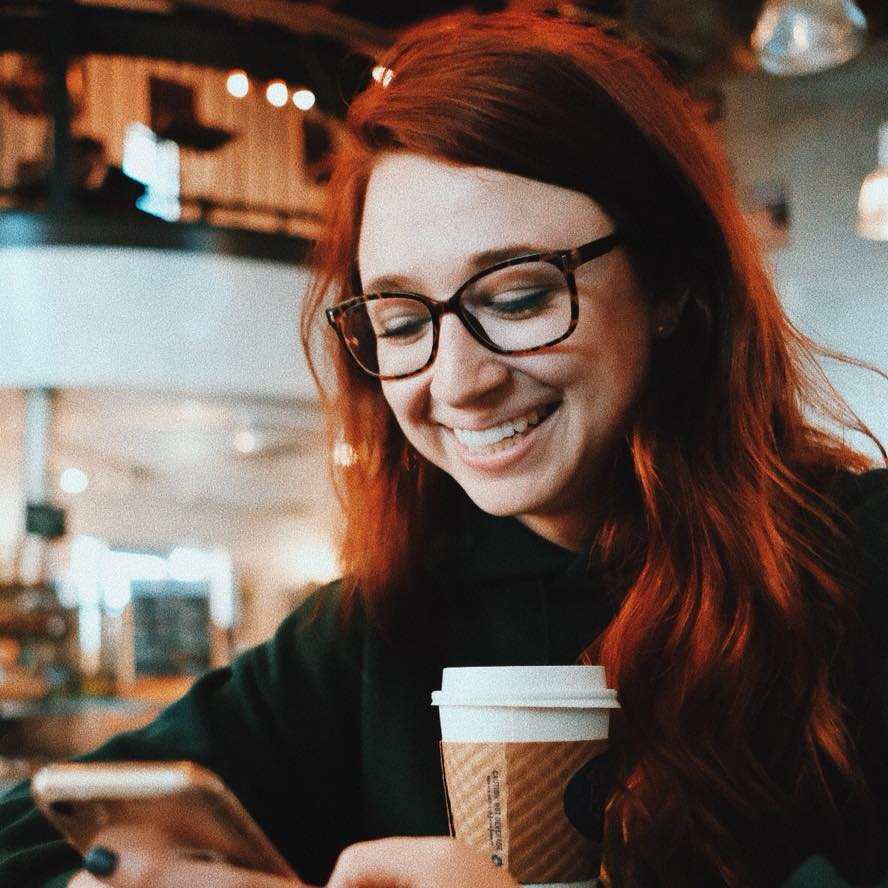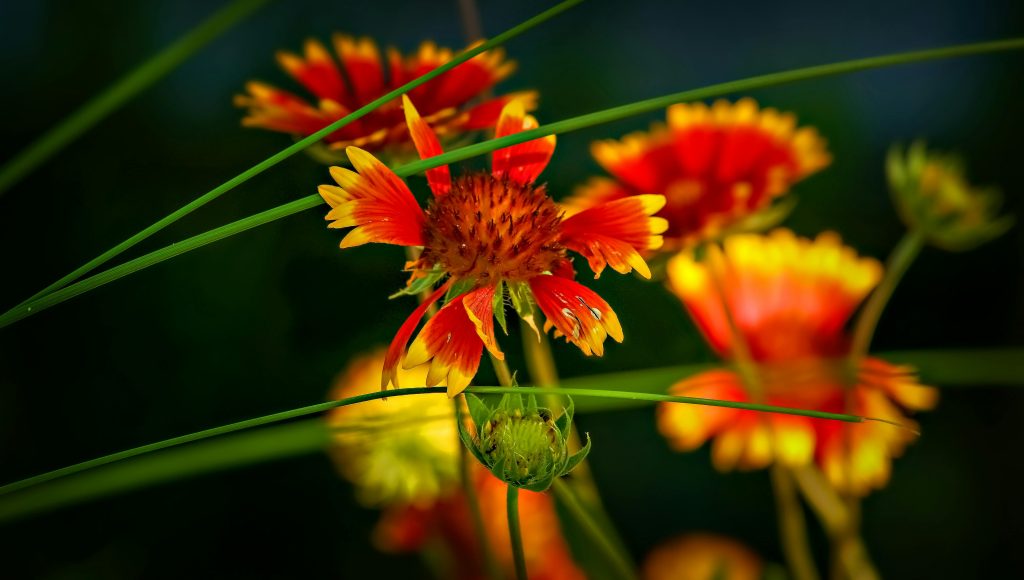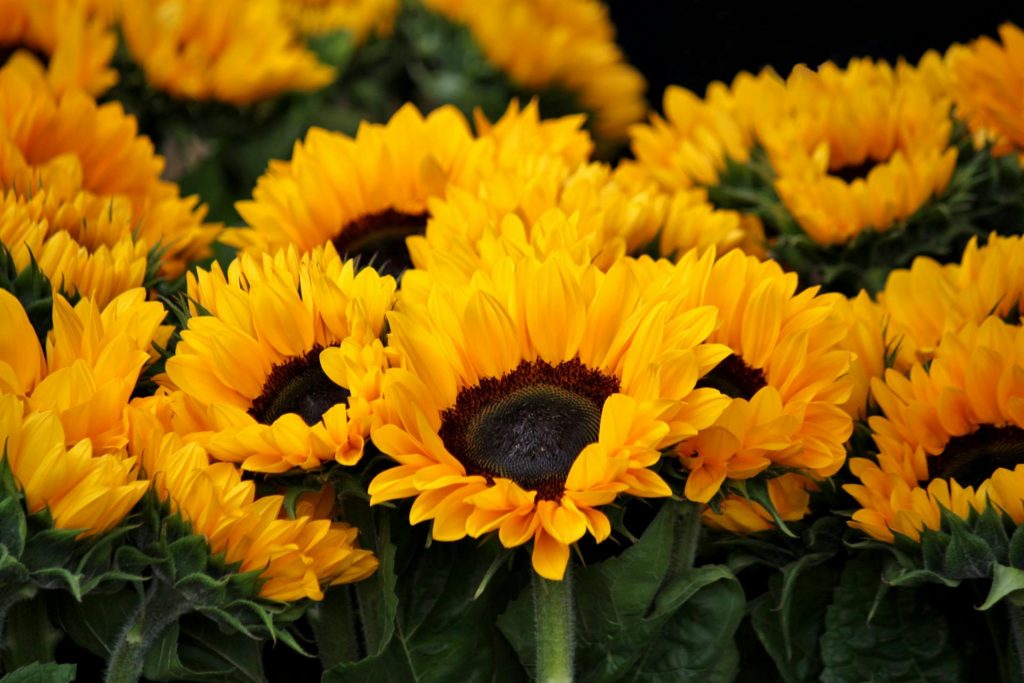Bees play a crucial role in pollinating flowers, plants, and crops, making them essential for healthy ecosystems and food production. By planting bee-friendly flowers, you can support these hardworking pollinators and help them thrive. Whether you’re a beginner gardener or a seasoned pro, choosing the right plants can create a beautiful and buzzing haven for bees. Here are some of the best blooms to attract bees to your garden, all while adding vibrant colors and texture.
1. Lavender
Lavender is a bee magnet, known for its fragrant purple spikes that are irresistible to pollinators. Its long blooming season and fragrant scent make it a favorite among bees. It’s also incredibly easy to grow and thrives in sunny, well-drained soil, making it a must-have in any bee-friendly garden.
Tip: Plant in clusters to create a larger landing pad for bees and other pollinators.
2. Sunflowers
Sunflowers are iconic summer blooms with large, bright yellow petals and a central disk packed with seeds. They are not only stunning but also a great food source for bees. Bees love sunflowers because of their large, easily accessible flowers and abundant nectar. Planting different varieties, from the tall giants to the smaller dwarf types, can keep bees coming back all season long.
Tip: Make sure to leave the spent flowers to go to seed, as bees will love them even after the bloom fades.
3. Bee Balm (Monarda)
Bee Balm, aptly named, is a favorite of bees and other pollinators. With its spiky flowers in shades of red, pink, purple, and white, Bee Balm not only adds a pop of color to your garden but also provides an abundance of nectar. It’s particularly attractive to honeybees, bumblebees, and hummingbirds.
Tip: Bee Balm thrives in moist, well-drained soil and partial shade, making it perfect for areas with less direct sunlight.
4. Echinacea (Coneflower)
Echinacea, or coneflowers, are hardy plants with large, daisy-like flowers that bees simply adore. Their vibrant purple, pink, or white blooms provide ample nectar throughout the summer months, making them a reliable food source for bees. Echinacea also has medicinal properties, adding even more value to this plant.
Tip: Echinacea is drought-tolerant and easy to maintain, making it ideal for low-maintenance gardens.
5. Borage
Borage is a versatile herb that produces striking blue star-shaped flowers that bees can’t resist. This plant not only attracts bees but also adds a lovely pop of color to your garden. Additionally, borage is an excellent companion plant for vegetables, helping to improve the growth of other plants.
Tip: Borage is a self-seeding annual that thrives in full sun and well-drained soil, and it can be grown easily in containers or garden beds.
6. Clover
Clover, often seen in meadows and lawns, is a favorite of many bee species. White clover, in particular, blooms prolifically and is rich in nectar, making it an excellent choice for attracting pollinators. It’s also a fantastic ground cover that improves soil health by fixing nitrogen.
Tip: If you’re looking to improve your lawn and help the bees, consider planting clover instead of traditional grass.
7. Marigolds
Marigolds are bright, cheerful flowers that come in shades of yellow, orange, and red, and they’re beloved by bees. While they’re often associated with ornamental gardens, they also provide a steady source of nectar for bees throughout the warmer months. Plus, their scent helps repel pests, making them a great companion plant for other garden favorites.
Tip: Plant marigolds in clusters to attract more bees and create a vibrant, pollinator-friendly garden.
8. Black-Eyed Susan (Rudbeckia)
Black-Eyed Susans are easy-to-grow perennials with stunning yellow petals and dark centers that attract bees, butterflies, and other pollinators. They bloom profusely in the summer and fall, providing bees with a continuous source of nectar for an extended period.
Tip: Plant these in full sun for best results, and deadhead them to encourage more blooms.
9. Sage
Sage is another herb that offers abundant nectar for bees. Its tall spikes of purple, pink, or white flowers are not only beautiful but also attract a wide range of pollinators, including honeybees. Sage is an aromatic herb that works well in herb gardens or as a border plant.
Tip: Sage thrives in dry, well-drained soil, and pruning the plant regularly will help maintain its shape and encourage more blooms.
10. Wildflowers
Wildflowers, such as buttercups, clover, and cornflowers, are naturally bee-friendly and often found in meadows and naturalized gardens. Planting a mix of native wildflowers can create a vibrant, biodiverse landscape that supports not only bees but a wide range of beneficial insects and wildlife.
Tip: Choose native wildflower seeds that are suited to your region for the best results and the most sustainable habitat for local bee species.
11. Asters
Asters are late bloomers, flowering in late summer and fall when other plants have finished blooming. Their daisy-like flowers, which come in shades of purple, pink, and white, are rich in nectar and are particularly attractive to honeybees and other pollinators. These flowers will help extend the pollination season and provide a much-needed food source as winter approaches.
Tip: Asters thrive in full sun and well-drained soil, and they make excellent additions to fall gardens.
12. Hollyhocks
Hollyhocks are tall, showy flowers that are perfect for attracting bees. Their vibrant blooms in shades of pink, white, red, and purple are packed with nectar, making them a popular choice for pollinators. Hollyhocks also make an excellent backdrop in garden beds due to their height.
Tip: Plant them in full sun with well-drained soil, and support their tall stems with stakes if needed to prevent wind damage.
By choosing the right flowers for your garden, you can create a pollinator paradise and help support bee populations that are vital to our ecosystem. Planting a variety of blooms throughout the seasons ensures that bees have access to nectar and pollen year-round, improving biodiversity and the health of your garden. Whether you’re adding a few bee-friendly flowers to a container garden or creating a larger, pollinator-friendly landscape, your efforts will make a significant difference for these essential insects.







